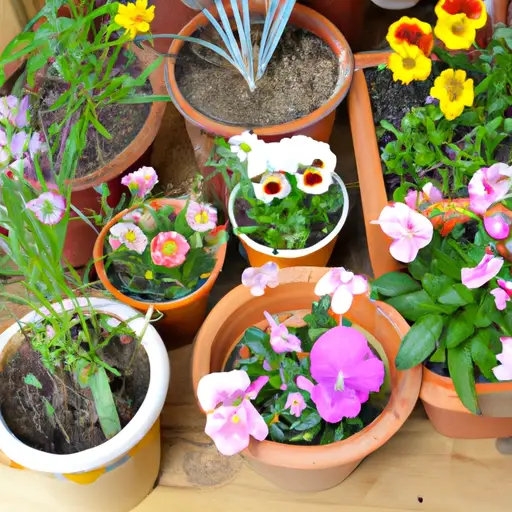Unlock the Secrets of Successful Flowering Plants in Containers
Flowering plants bring beauty, color, and vibrancy to any space. Whether you have a small balcony, a patio, or a backyard garden, container gardening is an excellent way to enjoy the wonders of flowering plants. However, growing these plants in containers requires specific knowledge and techniques for them to thrive and reach their full potential. In this article, we will explore the secrets of successful flowering plants in containers so that you can create a stunning and flourishing display.
1. Selection of Containers
The first step towards successful container gardening is selecting suitable containers. Ideally, choose pots or containers that are well-drained and have drainage holes at the bottom to prevent waterlogged roots. Clay pots are popular choices as they allow excess moisture to evaporate through the sides. Just ensure that you choose an appropriate size depending on the plant’s growth habit.
2. Soil and Fertilizer
Optimal soil quality is vital for container-grown flowering plants. A well-draining potting mix rich in organic matter is ideal as it allows roots to breathe while retaining necessary moisture. Avoid using garden soil as it tends to be too heavy for container plants. Regularly feed your plants with a balanced slow-release fertilizer or liquid fertilizer diluted according to instructions on the packaging.
3. Watering Techniques
Maintaining proper watering techniques is crucial for successful container gardening. Container-grown plants tend to dry out faster than those grown in the ground due to limited root space. Make sure not to overwater or underwater your plants – both can be detrimental. Water thoroughly when the top inch of soil feels dry but avoid leaving your pots standing in water as it can cause root rot.
4. Light and Temperature Requirements
Most flowering plants require adequate sunlight exposure for healthy growth and blooming. Before selecting your plant varieties, assess your garden’s sunlight conditions throughout different times of the day. Some species prefer full sun, while others may thrive in partial shade. Additionally, be mindful of temperature requirements and choose plants suitable for your climate to ensure optimal growth and blooming.
5. Pruning and Deadheading
Pruning and deadheading are essential practices for maintaining healthy and vibrant flowering plants in containers. Regularly remove any dead or dying blooms, which will encourage the plant to produce more flowers. Additionally, pruning helps shape the plant and promotes bushier growth. However, each plant has different pruning requirements, so it’s crucial to research specific guidelines before cutting back your plants.
6. Pests and Diseases
Just like plants grown in the ground, container-grown flowering plants can also be susceptible to pests and diseases. Regularly inspect your plants for signs of pests such as aphids, spider mites, or whiteflies. In case of an infestation, address the issue promptly with appropriate organic or chemical treatments. Additionally, ensure good air circulation around your containers to prevent common fungal diseases such as powdery mildew or leaf spot.
7. Seasonal Care
Flowering plants require seasonal care to adapt to changing weather conditions throughout the year. In colder climates, consider moving sensitive plants indoors during winter or providing necessary protection like frost covers or insulating materials. In warmer regions, provide shade during scorching summer days or use mulch to retain moisture in the soil.
8. Companion Planting
Companion planting is a technique that involves grouping compatible plants together to create a mutually beneficial environment. Certain flower combinations can enhance pollination rates while others can repel pests naturally. Research companion planting strategies specific to your flowering plant choices to maximize their growth potential.
In conclusion, successful container gardening with flowering plants requires careful attention to various factors such as container selection, soil quality, watering techniques, light exposure, pruning practices, pest management, seasonal care, and companion planting strategies. By unlocking these secrets and implementing them into your gardening routine, you can create a stunning display of thriving and vibrant flowering plants in containers that will bring joy and beauty to your outdoor space.













